Background
All of the techniques of parts handling in generic workstations can be applied in machine operations. Additionally, the following are several special issues that are common with machines.
Issues and Options
Machine-to-machine transfer
Traditionally, parts have been machined in batches. The steps involved manually lifting a part from a container, placing it in the machine, and subsequently lifting it to another container. When full, this container was moved, often just a short distance, where the cycle was repeated again.
Batch production has important shortcomings. One is the wasted steps in handling the container. Another is that it goes against the Lean Manufacturing concepts of reducing work-in-process inventory (WIP) and can delay discovery of defects.
For these reasons, many facilities are switching from batch production to single-piece-flow. In this system, the parts are not put back in the container, rather are transferred directly to the next machine assembly-line style. In some situations, the direct transfer from machine to machine can easily be accomplished using standard parts handling techniques. In other cases, because of the size and configuration of many machines, some creativity may be needed.
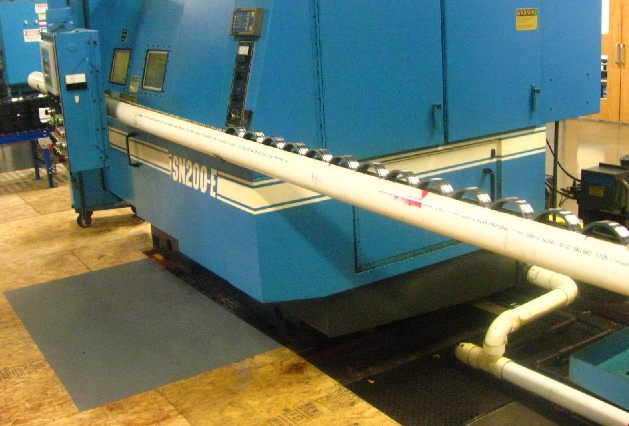 |
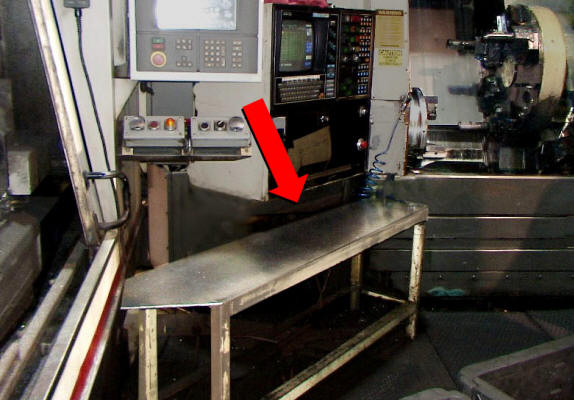 |
| Low-cost PVC pipe used for transfer | Slide table between machines in “L” layout |
The left-hand example shows a roll rack cut from a length of PVC pipe, which has a small footprint and takes advantage of the ring-like shape of the parts. In the right-hand example, two machines were positioned in an “L” arrangement and a slide table fabricated to fit as snugly as possible between the two.
 |
| High roll rack |
This example shows an overhead roll rack for cylindrical parts. The height allows passageway, but a small gate was incorporated to permit separation of the chutes.
Forklift access
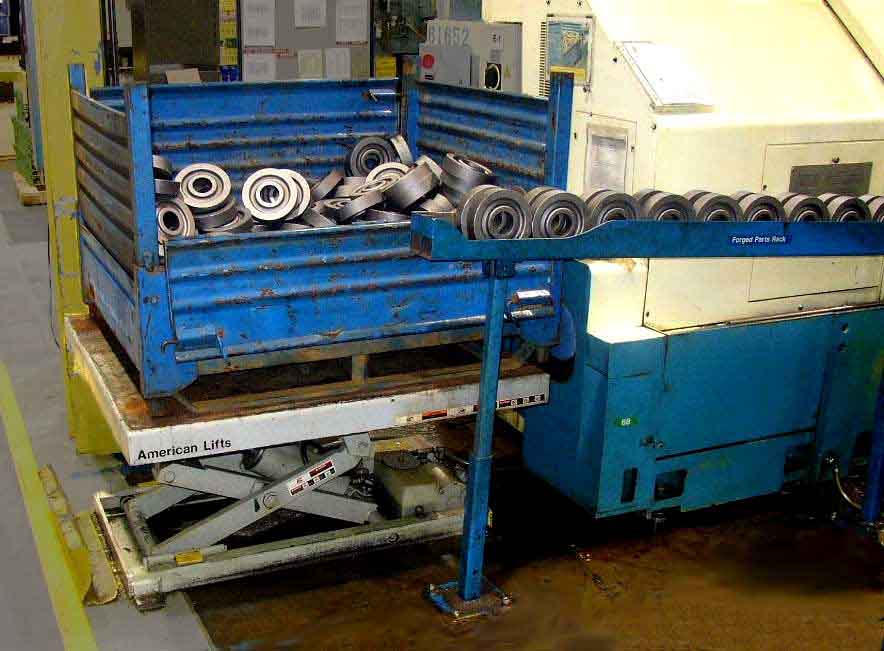 |
|
It can be difficult to set up a layout for a machine work area that locates everything within easy reach, yet provides clearance for a forklift truck to drop off and pick up containers. The photo shows a creative solution to the problem by positioning the container at the main aisle and using a roll rack to roll the circular parts to the point of operation. (Also, note the lift and the drop down door for the container, both good practices. For additional options, see Material handling: Lifts andContainers.)
Parts orientation
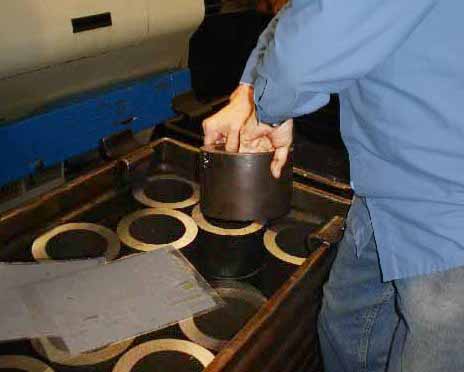 |
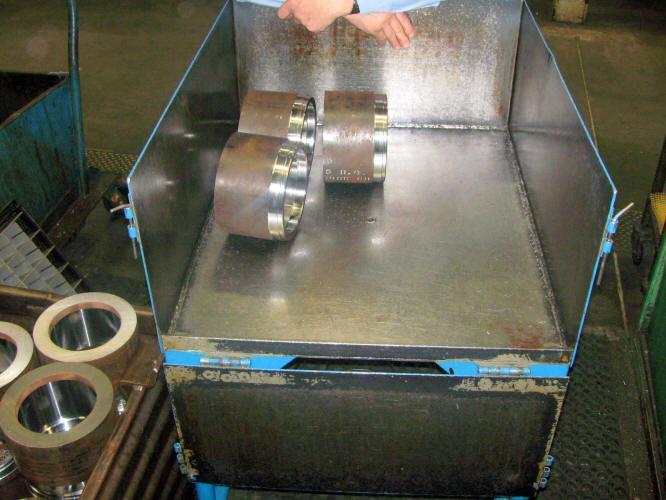 |
| Before: Hard to hold (and bending) | Option 1: Orient to facilitate rolling |
Good parts handling techniques include orienting materials in the manner that they will be used and sliding the items rather than picking them up and putting them down. The “before” example above left shows a very awkward hand position needed for lifting caused by the type of container, how the parts were stacked, and the lack of a container lift.
In this facility, excellent carts, as shown above right, were available that provided several significant advantages:
- Waist high with drop down doors to get easy access to the parts without needing to bend or reach.
- The carts could be rolled from location to location without the need for a fork truck, and thus easier to bring to where needed at the machine.
- The size of the carts was smaller and more consistent with Lean Manufacturing, although not single piece flow.
These carts presented two options for orientation. The first option is shown above, with parts oriented for easy rolling on and off the cart for manual loading one at a time.
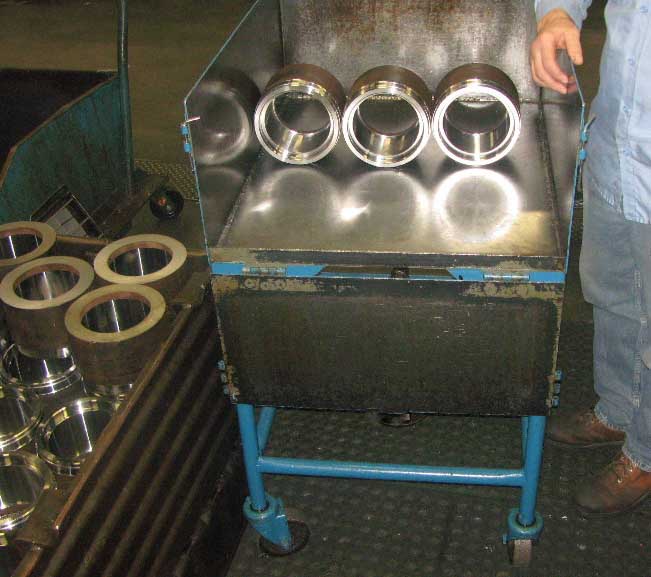 |
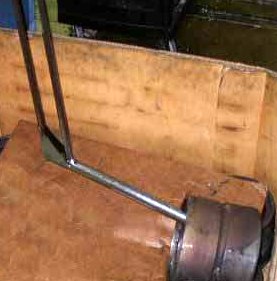 |
| Option 2: Orient to facilitate use of hoist hook | |
The second option has parts oriented to facilitate using a hoist with a long rod as a hook, which enables easy pick up of several parts at time for more efficient handling. Both are good options and this example is instructive on several levels.
(See all Material handling, especially Carts and Lifter-transporters.)
